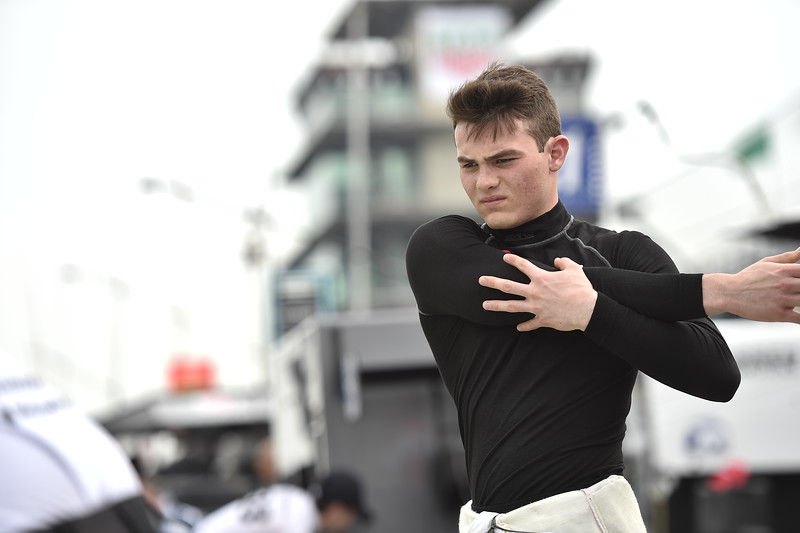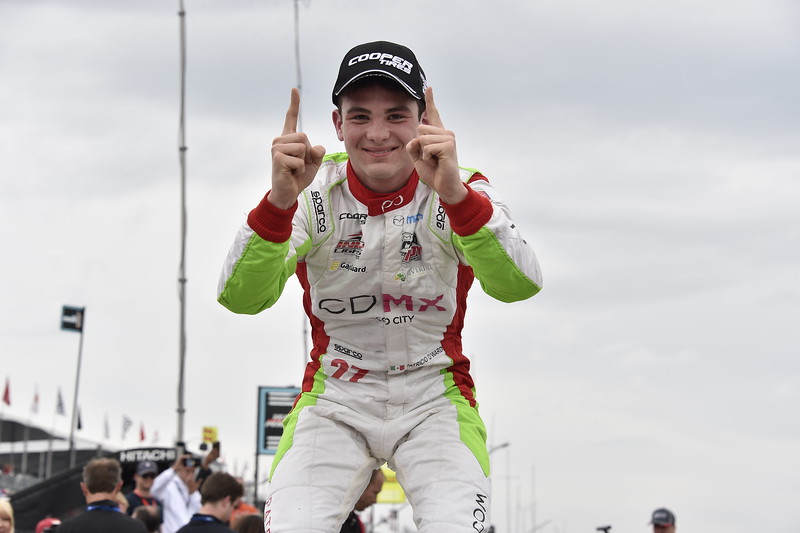
All photos: Indianapolis Motor Speedway, LLC Photography
After a successful switch to prototype sportscars last year, Patricio O’Ward is back in single-seaters, and the Indy Lights championship leader is banging hard on IndyCar’s front door
For as much anticipation as there was about Fernando Alonso at this year’s Daytona 24 Hours, the achievements of a young Mexican were arguably more noteworthy.
Patricio O’Ward became the youngest ever winner of the Daytona 24H and Sebring 12H in the Prototype Challenge class in 2017 aged just 17, and made the step up to the top prototype class this year. O’Ward qualified fourth overall at Daytona, less than a quarter of a second off pole and only behind two prototype regulars and a three-time Indianapolis 500 winner.
He was also the fastest LMP2 car in the field, nine places ahead of Alonso. For what Alonso lacked in sportscar experience, he should have more than made up for in age. Like Alonso, O’Ward’s sportscar exploits are what he does on his free weekends, because his chief focus this year is a single-seater campaign in which he is marking himself out to be an equally viable candidate as Alonso to become an Indy 500 winner.
Having been limited to just two Indy Lights outings last year because of a lack of funds, O’Ward is now maximising the golden opportunity of a full season with Andretti Autosport, leading the championship with three races left to run. Seven of the 14 races so far have gone to O’Ward, in addition to eight pole and two fastest laps. His win tally has only been bettered three times since 1977, and his qualifying record only equalled.
Shortly before he spoke with Formula Scout, O’Ward shared a post on Twitter that read ‘One day you’ll thank yourself for not giving up’. It is a statement he feels reflects his career, something he talks about in detail.
“I think – It’s been very hard up to this point. And a lot of times when things aren’t going perfectly it’s really easy to doubt yourself. But yeah, I think it summarises what I’ve basically been working towards,” O’Ward explains.
After karting with considerable success in Mexico and the USA, O’Ward made for single-seaters at the age of 14 and immediately made an impact. He finished fifth in Pacific F2000, winning four of the five races he competed in and taking pole and fastest lap in each, and was seventh in the Formula Renault 1.6 Northern European Cup, another championship where his age meant he could only complete a part-season.
“I was 14. They didn’t want to give me my license. That’s why I only did a few races [in 2013].”

O’Ward remained in Europe for 2014, finishing seventh in French Formula 4 with one win to his name. Again he had to wait until his birthday until he was allowed to compete. He kept sharp by karting in America, and returned to the country to race cars in 2015.
A winless season in Pro Mazda followed, but O’Ward was unfazed and still only 16 years old. Sixth in the standings was still an encouraging result, and for 2016 he remained with the same team, Pelfrey. He lost out on the title to rookie team-mate Aaron Telitz despite winning six of the first seven races. A collision with his rival in race two of the Laguna Seca finale ultimately decided the destination of the title.
“I’ve matured quite a lot [since entering cars],” O’Ward says. “I feel like from 2014 to 2016, was the biggest period of time for maturing as a driver.”
With no Mazda scholarship to take him to Indy Lights, O’Ward had to look elsewhere if he wanted to continue racing. Luckily he had entered an IMSA Lites race at the start of 2016, which proved to be the saving point of his career.
“So I wanted to race at Sebring because I’d never done that track, so I did a race in IMSA Lites [in 2016]. And the team owner really liked how I basically just drove a race car. So after doing that race, and then finishing the Pro Mazda season, he offered me a ride in a Prototype Challenge car for Daytona, Sebring, Watkins Glen and Petit Le Mans.”
O’Ward also managed to secure a deal to enter the first two rounds of Indy Lights with Team Pelfrey, taking a podium in his first weekend.

“When he heard I wasn’t doing any more Indy Lights, he then offered me the rest of the IMSA season. He thought I was going to do Indy Lights, but nothing really materialised or got together for 2017. So I said yes to the offer. We ended up winning the championship, seven out of eight races.”
James French, O’Ward’s team-mate in the car, was no slouch but certainly not at O’Ward’s standard, and their closest rival was usually driven by 2004 Indy 500 winner Buddy Rice. Although the opposition wasn’t significant in size, O’Ward learnt a lot.
“I think doing sportscars has helped a lot. More than anything, all the seat time that I got, especially in the Daytona 24 Hours. In those really long races with really long stints you learn about fuel mileage and tyre conservation., all that stuff. I’ve learned things that are certainly going to help me in IndyCar.
“I’d love to do Le Mans too. Driving in a LMP1 car would be pretty cool. But I’m not sure where that rulebook’s going so LMP2 would be totally fine. Obviously doing Daytona, Sebring, Watkins Glen and Petit Le Mans would be pretty cool to do in a DPi [the favoured prototype class in America]. I think the perfect scenario would be to be in IndyCar, do the four endurance races in the US in a DPi and possibly Le Mans.”
Before O’Ward can reach that IndyCar goal he has to finish the season in Indy Lights, which is technically still his first, and he’ll need to find a balance as he already splits his time between his home in Monterey in Mexico, and Indianapolis and Dallas in the USA. It was by impressing one well-known Indianapolis business owner that led to his big chance for 2018.
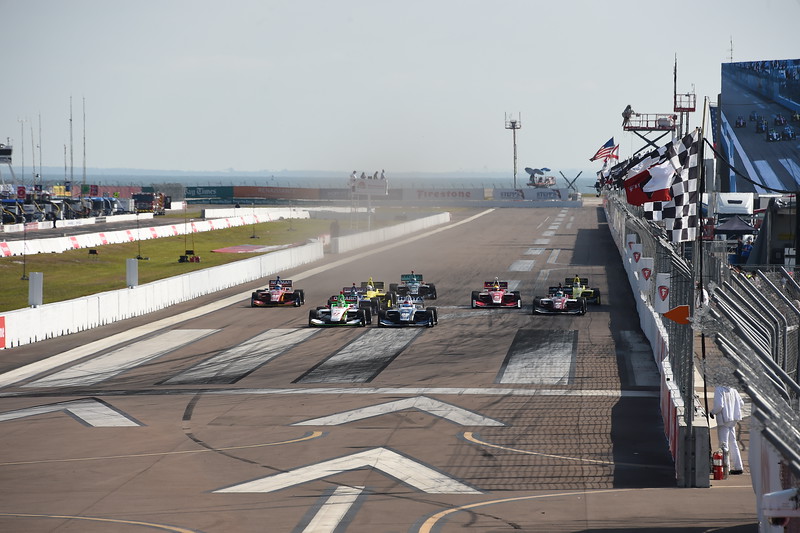
“I didn’t do any Indy Lights testing during the 2017 season, only the two race weekends,” he says. “I had one test day with Andretti Autosport at the end of the year, and then in 2018 I’ve had a full-on approach to the championship. I think we did five days of pre-season testing before St. Petersburg.
“I contacted the team. I wasn’t really asking for a ride, I was just asking for a chance to show them what I could do in a race car. I had a test, and they were really, really impressed. And Michael Andretti told [team president] J-F Thormann they had to have me in the seat.
“They just wanted me in the team and they wanted me in that seat. So a really, really good deal came about, and that’s why we’re in this position now.
“What helped me the most this year was being able to test the car that I was going to be driving the whole season, and to have some time to communicate and to work with the engineer I would have for the whole season. That’s what brought all the success we’ve had this year. You can really tell the difference. I haven’t really had a chance to have a fully committed season before this year, so I feel that’s why this year is so, so strong.”
At the beginning of the season it looked like O’Ward in particular struggled with Cooper Tire’s Indy Lights race compounds. Recently though he’s shown a marked improvement in race management, as shown by winning four of the last five races.
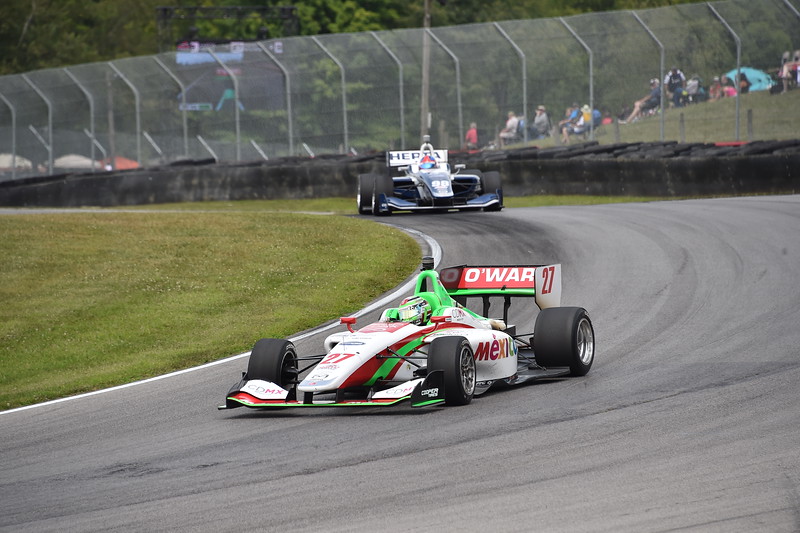
“Seat time is the only thing that’s going to give you the knowledge and the feeling of what you should be doing during the race. Everybody in the paddock besides me and Victor Franzoni, they’ve done every single track and race distance, twice at least.
“So for me it’s been a new learning curve. After Road America I feel like I learned a lot during those races with tyre conservation. How you kind of have to approach it. And after that I’ve been stronger over race distances.”
This year’s Indy Lights championship has been a close fought affair between O’Ward team-mate Colton Herta, with Belardi Auto Racing’s Santiago Urrutia clinging onto title contention behind them.
“I thought it was going to a pretty close championship between me and Colton,” admits O’Ward.
“But I honestly thought it would be tighter with the other teams. Like Urrutia, he’s been runner-up in Indy Lights the last two years. There’s Telitz, the 2016 Pro Mazda champion and Franzoni, the 2017 champion too. But I guess my team-mates and I have put a really good package together. We’ve basically been strong at every track.”
Although there have been no collisions, O’Ward and Herta have had some tense on-track battles, something O’Ward assures does not transfer to when they’re outside of the car.
“I’m pretty laid back honestly. I’m not really a confrontational driver. I don’t like being uncomfortable with team-mates.
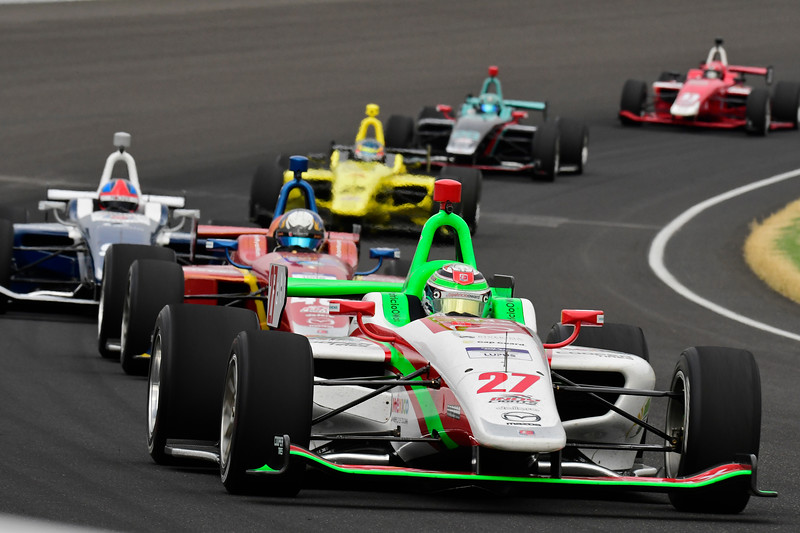
“I’d like to get along with them and I try to get along with them as much as I can. I honestly respect Colton a lot on the track. Even when we’ve raced hard, I’ve always left a space and I respect him. Colton has been respectful of me as well. So far it hasn’t been uncomfortable, it’s been a really good working relationship.
“We push each other. We’ve been pushing each other really really hard to create a really strong package. Not just for us but for our team-mates as well and for Andretti Autosport in general.
“We’re all transparent with each other, so we all see each other’s videos and data. Nothing is hidden. They all know my set-up, and I know their set-up. At the end of the day though, me and Colton especially drive really different cars. So sometimes what works for him doesn’t work for me.”
In the first half of the season it looked like advantage Herta, as the sophomore driver won four races in a row, including both Indy GP races, the prestigious Freedom 100 and the Road America opener. Herta’s winning spree didn’t faze O’Ward though, perhaps aware that his own victory run in Pro Mazda ultimately did not lead to the title.
“I didn’t really get any extra pressure [from Herta winning] because I knew the pace was there. I feel like I’ve been the one to beat in qualifying sessions. I’ve basically been the fastest one on the grid almost every weekend. And honestly at Indy GP I just didn’t have any luck.
“I had a blowout, then I got hit in the first race. I started from pole for both. Then at Road America I got demolished by someone at the hairpin, it damaged my rear left and the floor so I couldn’t really do anything. So there were three races where luck was not on my side.

“If it’s not a win, I usually contended for a second. Like the Freedom 100 and the first Road America race. In Iowa, Toronto and Mid-Ohio my goal was to win every single race. I missed just one, in Toronto race two I was second, but all in all I achieved what I wanted to do there.”
With the championship in its closing stages, O’Ward needs to remain on top form if he wants to become the final recipient of Mazda’s $1,000,000 scholarship to IndyCar.
“I’ve been pretty cautious the whole year, so I’m going to take the same approach [for the rest of the season]. I try not to crash, I try not to put the car in danger. Obviously taking care of the championship as well.
“But a win at Gateway would be preferred; I feel like I’d be very comfortable for Portland that way. If I win at Gateway I can arrive at Portland and basically just start and park if I wanted to. I’d have a 40 point lead.”
The IndyCar dream is getting closer, but O’Ward will not have the budget for 2019 if he fails to win the title, and has had remarkably little interest from teams despite his form.
“I kind of have to win the championship to move up. [The scholarship] is only three races anyway, and the whole championship is 17. I just hope someone puts their trust in me and then hopefully I’ll give them their money’s worth.”
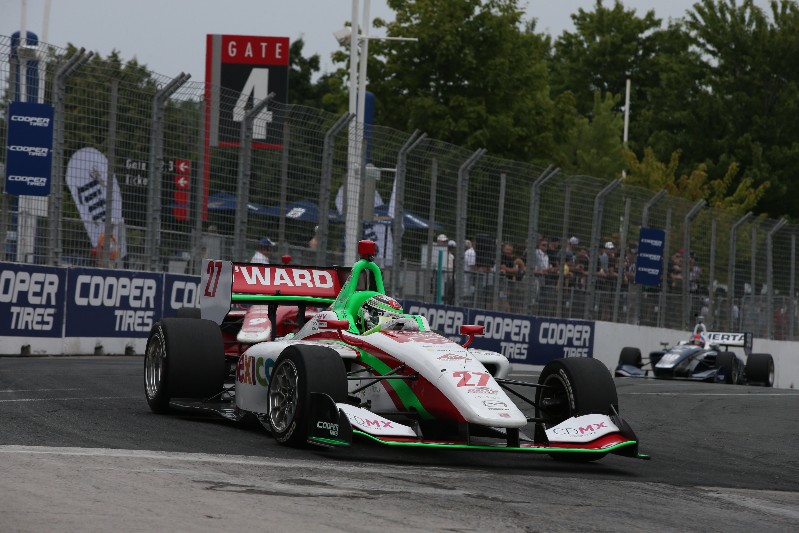
O’Ward is set to follow his title rival in testing an Andretti-Herta IndyCar, ran by Colton’s dad Bryan, “at some point within the next month or two, but not sure where or when”, and will also be getting seat-time with Harding Racing.
“Honestly I would’ve expected a lot more teams approaching, but so far it’s basically been two teams,” O’Ward reveals.
“One of them is Andretti, and the one that wants to test the top three Indy Lights drivers is Harding. Those have honestly been the only ones that are interested. I haven’t really had any talks with anyone else.”
Having only tuned 19 in May, O’Ward still has his best years long ahead of him. Within a sensible timeframe O’Ward could be a winner of the Indy 500 and the Le Mans 24 Hours by the time he’s 25, young enough to still make an impact in Formula 1, or even Formula E, if he desired to.
In every series he has competed in he has measured up against drivers who have been older, more experienced and higher-rated than him, and more often than not beaten then. Circumstance can, and will play a part, but for fans looking for the next driver to potentially complete the motorsport Triple Crown, O’Ward is one to watch.
